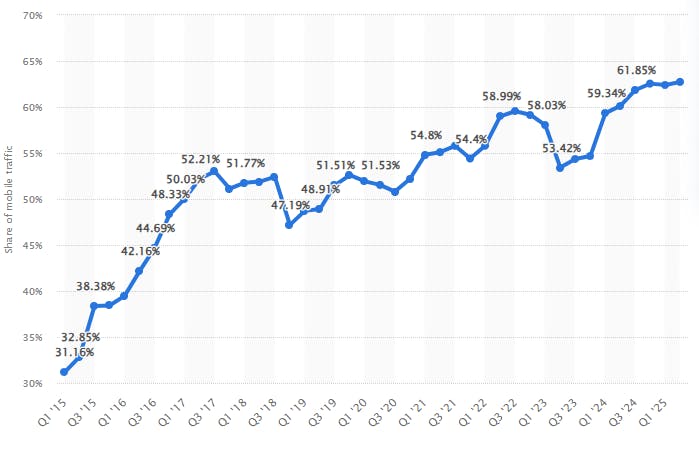Why Your Website's Technical Foundation is the Hidden Driver of Conversions
Why should marketers care about technical details? A poor technical foundation kills conversions. Explore how website speed, a mobile-first approach, and secure hosting are not just IT issues but core drivers of your marketing ROI.
While everyone is quite aware that a website cannot exist without a technical foundation, what is often overlooked is the role of this technical background in completing marketing goals. In fact, the website’s technical foundation is one of the most powerful tools in securing a high-converting website.
What is more, by understanding the importance of technical concepts for marketing objectives, marketers and developers can cooperate more effectively. This is why this blog post will aim precisely at this - making the technical concepts clearer, and unveiling their role in marketing endeavours.
Why Website Speed Is so Important
For marketers, understanding the importance of website performance should not be just a plus. It is a fundamental feature that leads to revenue generation and brand building. If 53% of people are ready to leave a website if it takes too long to load, this is not just a bounce. It’s a negative brand interaction.
In the first blog post of this series, we mentioned that websites need to load in less than three seconds, lest they lose potential users even before they start their journey. A study found that a website load delay of 100 milliseconds can lower conversions by 7%. A statistic that should not be alarming, but, instead, motivating.
While it is still a task assigned to developers, everyone involved must be aware of the fact that every second and millisecond matters, and prioritise loading speed - not as a feature, but as the backbone of your website.
A slow website leaves a negative first impression. Or rather, it does not leave an impression at all. You lose the customer even before they have had the chance to read your carefully crafted copy or see your beautifully and strategically built design.
Mobile-First Approach
According to Statista, mobile devices made up 62.73% of global website traffic in the second quarter of 2025. Since your website visitor is most likely using their mobile device, the website can no longer be built with mobile as secondary.
Global mobile traffic 2015-2025, Source: Statista 2025
Even though the majority of users are using their mobile devices, their conversion rates are statistically lower. This is not only a result of poor website speed, but also navigation difficulties and cumbersome data entry processes.
To bridge this gap in conversion rates, and use it as an opportunity to stand out in the market, a website should have:
- Responsive design or a mobile-first design, allowing the user to have all the material easily accessible and readable, without any additional effort on their part.
- Simplified navigation, with a minimal number of taps to get to the desired goal.
- Touch-friendly design, with all interactive elements large enough and with enough space around to be easily tapped.
- No intrusive pop-up screens, which, on mobile phones, take over the entire screen, and are negatively rated by Google, causing the website to rank poorly in search results.
- Unmatched speed.
Security and Hosting
Website security is an extremely powerful feature, directly impacting conversion and bounce rates, search engine rankings and overall brand trustworthiness. It is crucial to build an environment where users feel comfortable sharing their personal information, making a purchase, or simply engaging.
HTTPS, the encrypted version of the standard HTTP protocol, is not a choice, it is a must. The “Not secure” warning by the user’s browser, coming as a result of using HTTP, signals to the user that the website, and, more importantly, the brand, cannot be trusted. Additionally, a non-secure protocol receives lower Google rankings as well.
The web hosting provider serves as the essential base that everything else depends on. The server’s capacity, configuration, and stability have a direct influence on the key aspects of a website’s performance: speed, security, and scalability. Without a reliable hosting foundation, achieving a fast, safe, and scalable site is virtually impossible.
Conclusion
As marketers, it is your responsibility to secure website visibility, trustworthiness, and performance, even though you’re not the ones making it work on the backend.
While the technical side of building a website remains the job of experienced developers, marketers need to understand the key elements that drive conversions.
Just as marketers should be familiar with the technical features we’ve covered in this blog, the technical team you partner with must also prioritise performance features, always keeping the brand’s broader business goals in mind.
This process of bridging the gap between marketing and technology is the final step in building your high-converting website. What remains is tracking, analysing, testing, and optimising - a cumulation of all the prior efforts for effective long-term results.
Want to learn more about the process of testing and optimisation? Sign up for our newsletter and be among the first to receive the conclusive part of the conversion-focused web development series.






